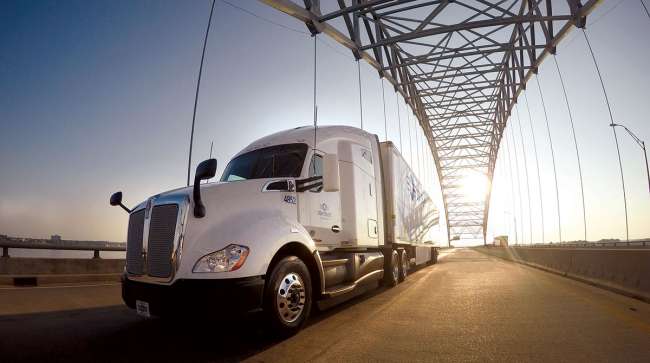Staff Reporter
Signs of a Slowdown as M&A Activity Nears End of Busy 2022

[Stay on top of transportation news: Get TTNews in your inbox.]
The trucking industry continued to experience strong acquisition activity this year, but there may be some signs of softening heading into next year.
Tenney Group CEO Spencer Tenney noted that while industry disruptions and volatility were prevalent, the volume of deal activity has met expectations.
“It still was unbelievably active from an M&A standpoint. We certainly expected that,” he said. “There were some nuances that are always a little unexpected. But all in all, we expected a ton of deals, and that’s exactly what happened.”
Tenney Group currently represents 18 deals that are between $20 million and $300 million in annual revenue. Tenney noted that the deal volumes surpassed the already busy activity seen last year, which was driven by pent-up demand. He said some of that spilled over into this year but has steadily been overcome by other drivers.
“There [were] some mega deals in 2021,” he said. “It was just everybody trying to figure out how to get more capabilities, and you saw different characteristics in the types of deals that were getting done that demonstrated that.”

Tenney
Tenney also noted that freight volatility and inflation during the summer spurred more new buyer submissions in the third quarter. He said that could have been a sign the market was normalizing and companies who couldn’t make deals the last couple years because of high valuations were starting to come forward.
“It displays how the fundamentals that have been driving M&A at record levels for the last three or four years are still very much driving M&A,” Tenney said. “The motivations might be a little bit different. But there’s just no escaping the fact that to solve big problems, to be competitive, most companies are finding that reinvention is pretty much necessary at this point.”
Jonathan Britva, principal at Republic Partners, noted this heightened activity exists across the transportation sector. He attributed capital availability and strong performance by transportation and logistics companies as major drivers.
“Broadly, 2022 was an extremely active year on the M&A front,” Britva said. “I think in terms of volumes from our perspective, deal volumes and deal fee revenue, this was probably our best year ever from both metrics.”

Britva
Britva noted the private equity and financial buyer side had a lot of strong years of performance. Because of that strategics have cash on their balance sheet and are driven to do something with that extra funding.
“You’ve had an environment where a lot of logistics and transportation businesses have performed really well through COVID, through the pandemic, into the supply chain challenges last year and they’ve continued to perform throughout this year,” he said. “I think the fact that companies are doing well in the space, there’s a lot of capital that needs to be deployed in some form or fashion, those factors have kept M&A really active.”
Signs of Slowing
Lee Clair, a managing partner at Transportation and Logistics Advisors, also saw an active trucking acquisition market during the first three quarters of this year. But since then, it has slowed.
“One of the biggest problems is that the credit markets are very difficult right now,” Clair said, adding that M&A is difficult when you can’t borrow money.
“When borrowing money in the credit markets, the lenders have to make a decision of what do they want for an interest rate and how much leverage will they accept for some period of time farther out in the future,” he explained. “And right now, it’s very unclear what the interest rates are going to be and what inflation is going to be in the short term, much less out into the future.”

Clair
Tenney pointed out the changing capital markets may open the door to smaller carriers such as a regional player. He noted that in the prior two years, they had difficulty competing for acquisitions against the privately backed national strategics and the publicly traded strategics. But with evaluations normalizing and the cost of capital rising they may have a better chance.
“What’s interesting is that the cost of not doing deals has also risen,” Tenney said. “It’s like, ‘Hey, I’m not excited about these interest rates but what’s the alternative.’ The alternative of not growing to offset the rising expenses across a number of different expense items, that’s not an option. So, they have to figure out some ways to continue to grow, to be competitive, to attract the right talent, to evolve, to innovate, and it’s just very difficult to do all those things and home grow the solutions.”
Clair noted it’s not clear how the normalizing valuations are impacting sellers. In the past two years, the higher evaluations gave carrier owners a lot of motivation to sell. Since buyers also had money they were able to get deals done. However, Clair said that has started to change.
“If it’s the right time and there’s no money, then things are going to sit,” he said. “The issue of supply and demand is more of an unknown than it normally has been. To know how tight or slack the market is going to be on supply and demand. The fall peak was a lot less than what everybody thought. With the interest rates running up so fast and inflation running so high, are things going to collapse?”
Britva noted that market uncertainty comes down to risk and how much companies price that in. He said this might potentially impact deals because some evaluations may go down beyond what sellers are expecting. That creates a potential situation where a buyer becomes unwilling to pay what the seller expects because they foresee added risk.
“A lot of sellers are still performing well. So, they’re rightfully saying: ‘Why should those expectations change? I’ve still done really well, I’m still performing, why should I take a lower price?’ ” he said. “And that sort of dynamic, that mismatch between what buyers are willing to pay and what sellers are holding out for, that has the potential to cause some issues in getting transactions done.”
Britva will typically see companies that had already started the process of closing a deal pushing to get it done before the year ends. There isn’t a lot of new deals starting but those existing ones could result in an end of the year boost. He expects another busy market next year, even if not as active. His pipeline of active engagements that plan to be launched next year is already pretty full.
“I think there’s still a decent amount of uncertainty out there,” Britva said. “What kind of environment are we going into in the next year or two? There’s been a lot of noise. I think not everyone is certain what the immediate future holds in terms of the economy.”

The volume of M&A transactions has slowed since earlier this year; experts say it may be due to factors such as equipment financing and labor. (gerenme via Getty Images)
Britva noted that a lot of things that occurred during the pandemic, including the ways in which it changed the supply chain and the new ways in which companies view mergers and acquisitions, are still in play — notably the drive to diversify their business models to better withstand a more challenging environment.
“This has definitely spurred people to really refocus on that effort,” Britva said. “I think there’s still supply chain challenges out there. That hasn’t abated. I think people view M&A as a way to deal with some of those supply chain challenges that we’ve faced earlier on during COVID and continue to face.”
Labor and Equipment
The availability of labor and equipment were also major drivers of acquisitions the last few years. The shortage of professional truck drivers reached a record 80,000 last year while new trucks became difficult to get because of a shortage of semiconductor chips. Those issues have eased some this year but they still remain present.
“I think transportation companies are always looking for an opportunity to supplement their capacity,” Britva said. “That element or rationale for making an acquisition is still very prominent. It may not be the only reason why someone or a company decides to make an acquisition. But I believe those challenges still persist and will always be an important factor when looking at M&A and reasons why a company may look to make an acquisition or supplement an existing business.”
Meet the truck-driver-turned-writer whose book is helping thousands of everyday people lead with positivity. Then, hear from the philanthropist whose truck-driver-focused charity seeks to ensure that drivers who need help, get it. Tune in above or by going to RoadSigns.ttnews.com.
Clair does believe the easing up of labor and equipment shortages has made buyers less interested in buying underperforming carriers for their assets. He also pointed to additional problems for those carriers that bought equipment when prices were high.
“You have the position that what people have paid for equipment [are] much higher prices than anybody has ever paid before,” Clair said. “So, you may actually be buying a business where the market value of the assets are less than the book value, or it could become that sometime the near future. That makes it hard for a seller to sell and take a loss on the assets and hard for buyers to buy assets that are worth less in the market.”
Clair added that equipment financing is a concern. He noted that the interest rates have moved so much that those who bought equipment and financed it may have the risk of a loss on sale.
“This is a very different time and less clear with where things are going,” Clair said. “And the other piece to it is there is a significant probability of increased bankruptcies. People who’ve bought equipment at very high prices, financed at high interest rates or at low rates, and then have to refinance at a higher number. They’re in trouble. Particularly if the market goes soft.”
Britva said the deals his company was able to get done this year have already surpassed its high-water mark in terms of volume of transactions.
“I think there’s definitely more headwinds out there for M&A,” Britva said. “You’ve got increasing inflation. You’ve got higher interest rates, which impacts buyers. You have uncertainty with some of the geopolitical things occurring in the world. I think there’s definitely more headwinds out there. We’re still actively in the market with a number of transactions. We’re still having active conversations with new potential clients. I believe that things will continue to get done in terms of M&A in this space throughout the rest of this year.”
Want more news? Listen to today's daily briefing below or go here for more info:





